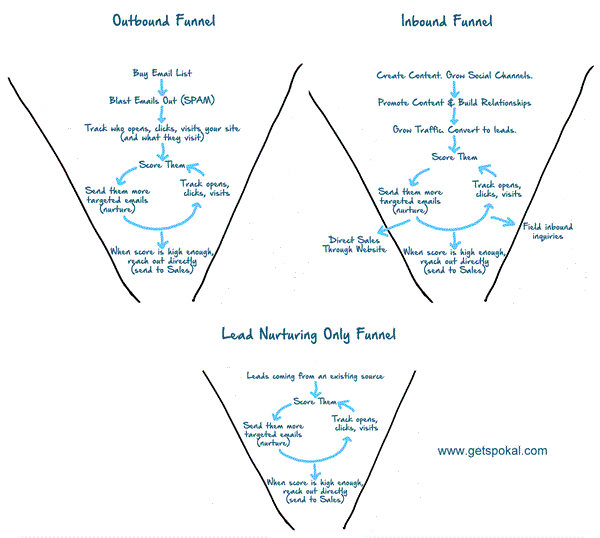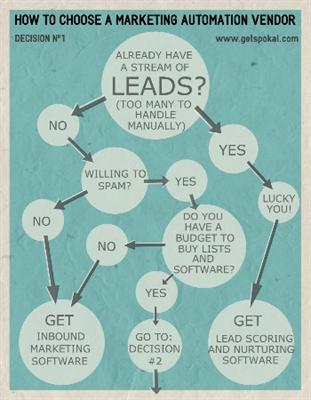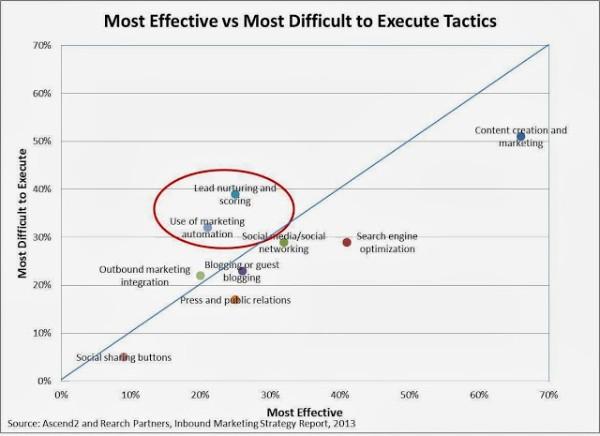It’s easy to want to jump on the latest bandwagon – especially when the promises are so alluring. Get more leads, more customers, and save time.
Before you do – recent surveys found that although many people do have success with marketing automation, the results often don’t justify the investment and people who buy it rarely use it fully.
Why?
Probably because of a lack of education and understanding around what tools are appropriate for your particular circumstances. It is not a question of one size fits all, no matter how much the Marketing Automation vendors (and we’re one!) try to convince you otherwise.
Part of the problem is vocabulary.
Different companies use the same terminology to mean different things. For example, Act|On calls itself a marketing automation platform (and it is), however it is also an outbound-only automation platform. Hubspot also calls itself a marketing automation platform, however it’s an inbound-only automation platform. They both call themselves marketing automation platforms, yet they are almost opposites in philosophy, and how they work to bring you new customers.
To further complicate things, there are providers who are neither inbound or outbound, and simply rely on you having an existing steady stream of leads that they’ll help you nurture and score so you or your sales team can be more efficient by only engaging with those most interested in your product or service.
So, what exactly is Marketing Automation?
I’m a terrible artist, however, I’ve drawn up a few ‘funnels’ so you can see how this might work given an inbound model and an outbound model. Click to see the larger version.
As you can see, there’s a lot of overlap later in the funnel, but the top of the funnels are very, very different.
Choosing the type of marketing automation platform that best suits your business is the MOST important decision you have to make when evaluating marketing automation providers (and whether you should use marketing automation at all).
It’s also why so many people have success with marketing automation, and why so many don’t.
If you already have a large source of leads, and your problem is identifying which ones are going to be the best for you to pursue, then the bottom of the funnel providers will likely be the first step that provides you with the most value. They’ll help you sort through the noise and identify the leads most likely to buy.
Most smaller businesses don’t have a pre-existing steady stream of leads, so they need to look at the top of the funnel before worrying about the bottom.
They must choose between an inbound process and an outbound one. It is absolutely possible to do both, however it’s best to focus on one until its systemized and working before trying to add the second to the mix.
The Marketing Automation Platform decision tree
We’re strongly anti-spam, so our choice here was easy. We’re an inbound organization. If you do choose to use outbound – just make sure you take my email address off your lists first 🙂
Inbound does have a downside. You have more work cut out for you. The payoff however is that you’ll reap greater rewards. Leads are self-selecting, and often come to you when they’re researching a purchase or making a purchase, so the timing is better – it’s on their terms. And content lasts. Content you create now will drive leads for months and years to come. Outbound stops being effective the minute you turn it off.
An inbound marketing automation system (like Hubspot or Spokal) helps with content creation, content promotion, social media, search engine optimization, lead scoring, lead nurturing and blogging. It covers most tactics on the chart above. (Note that in the chart above marketing automation refers to lead nurturing – the bottom half of the funnel as we’ve talked about it here.)
Spokal
Spokal for example, will help you:
- perform keyword research (so you know what to target)
- help you blog (using a state of the art drag and drop editor that lets you drag in Flickr images, Tweets, lead opt-in forms)
- maximize SEO with real-time SEO advice as you type
- promote and share content to social media (once, never, to a schedule or completely customized)
- track everything (including seo effectiveness in a ‘keyword not provided’ world) and social media shares
- grow your Twitter account on autopilot
- score leads simply
- nurture leads with programs you’re likely already familiar with, like Mailchimp.
It streamlines the process to make it faster, easier and more effective than trying to pull all the pieces together yourself, and it works with your existing WordPress website.
Summary
I’ve simplified some of this a little, but this is the first decision you must make when evaluating Marketing Automation providers. What is going to work best for you? Choosing the wrong type of provider is almost certainly going to result in wasted time and money. Don’t end up as another unhappy statistic.
Want more from us?
 Actionable tips to increase your website traffic and conversions in 15 minutes or less, 2-4 times a month.
Actionable tips to increase your website traffic and conversions in 15 minutes or less, 2-4 times a month.
Your thoughts?
I’d love to hear your thoughts. Has this been useful? Would you like to see a follow up post that digs into the next set of decision making criteria (features/effectiveness and ease of use)? Please leave a comment below and let me know if this has been useful and I should turn this into a mini-series.


